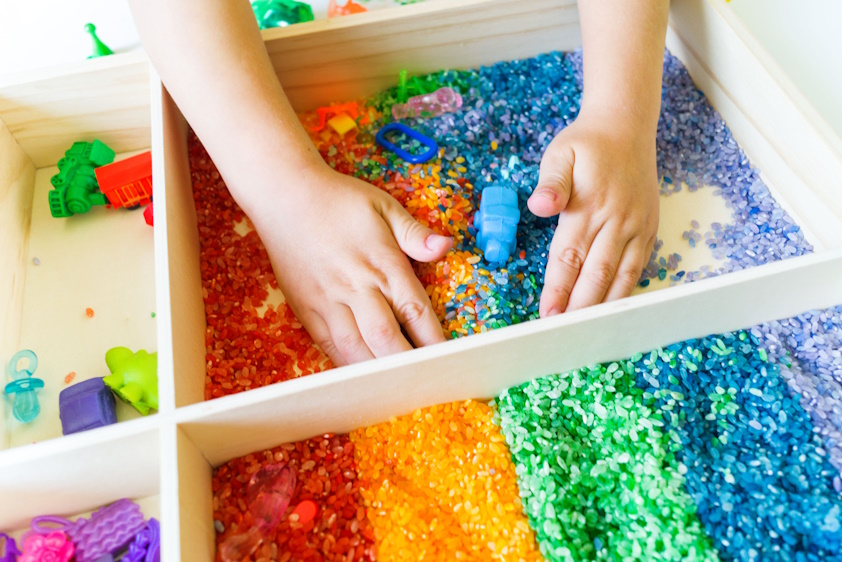Homebound Children Who Need Private Duty Nursing Can Have Fun With These Ideas
A child or young adult with specialized healthcare needs deserves to have fun and interact with their world. You can engage your child with creative play, art, and active games safely at home, based on their capabilities and interests – it just takes a little imagination on your part.
To help you think outside the box, we’ve put together a list of fun at-home activities for children of varying abilities, plus an explanation of private duty nursing services that could be available to you.
Private Duty Nursing Basics?
Private duty nursing is a medical assistance service tailored to a child’s individualized needs. If your child qualifies for pediatric private duty nursing, you can have a nurse or team of nurses assigned to your child or young adult. These nurses will visit your child at home and help them be as active, independent, and healthy in an effort to give them the best possible quality of life.
Your child’s private duty nurse can help with injections, IV therapy, cough assist, medication administration, ventilator management, G-tube feedings, routine blood draws, and more, so your child can stay where they’re comfortable instead of enduring the stress of doctor visits.
In Missouri, Kansas, and Illinois, state Medicaid covers the cost of private duty nursing. Check your state’s guidelines to determine whether your child qualifies for this coverage, or contact a private duty nursing agency near you to learn about your options.
Activity Ideas Suitable For Children Who Qualify for Private Duty Nursing
Always check with your child’s pediatric private duty nurse, physical therapist, doctor, or other childhood development specialist before introducing a new activity.
Sensory Play
Sensory play helps children explore their senses, develop motor skills, and improve focus. A sensory bin is an easy way to offer your children the opportunity for sensory play, and you can swap out what the bin contains to customize it for your child’s needs.
Fill a bin, such as a plastic tub with a lid, with loose materials. Some children prefer rice, dry beans, sand, or soft pompoms. Funnels, scoops, or small cups encourage your child to interact with the bin’s contents.
Sensory play is freeform with no pre-set rules for interaction. Always monitor your child during sensory play for their safety. Ensure the sensory bin’s filling is suitable for your child.
Puzzles
Jigsaw puzzles teach hand-eye coordination, fine motor skills, and shape matching. With puzzle options for every ability, you can find at least one or two suitable for your child.
Completing a puzzle without frustration may require encouragement and positive reinforcement. If your child finds a puzzle too difficult, move to an easier one while they develop skills for the more challenging one.
Art Projects
You don’t need to be an artist to help your child engage with art! The great thing about doing art projects together is that there’s something for every skill level.
Start with finger painting using non-toxic, child-safe paints and a large roll of butcher paper as the canvas. If you want something safe for the surfaces of your home, a can of shaving cream on the kitchen table is great fun to draw shapes in, smooth over, and start again.
Basic art supplies, like crayons, colored pencils, or washable markers, are a hit with lots of kids, too – so don’t feel like you need to invest in anything expensive to have a day of fun. You can, however, purchase pre-made craft kits for more advanced teen artists.
Suggest that your child create a piece of art for the important people in their lives, such as their private duty nurse, a grandparent, or friend. This encourages them to think about what that particular person would like and gives them motivation to complete the project.
Balloon Sports
You probably grew up hearing, “Don’t play ball in the house!,” but balloon sports are a non-destructive safe way for kids to move their bodies and feel the spirit of gentle competition.
Balloon volleyball can be played from a seated position. Encourage your child to reach and stretch to bat the balloon back to you from their wheelchair, hospital bed, or other seat.
“Don’t Touch the Floor” is a game for more mobile, active children. The goal is to gently bump the balloon upwards and prevent it from hitting the floor. Your child’s siblings can play, too, or they can play the game solo.
Obstacle Courses
Soft obstacle course toys get your child accustomed to walking on all sorts of surfaces and navigating objects in their way. It’s a way to play while also working on physical therapy techniques.
Start with a simple obstacle course based on your child’s abilities, then add new challenges over time as they practice. Your child’s physical therapist – if they have one – can help you with new ideas, and may even incorporate some into their therapy sessions to help keep your child engaged.
Indoor Camping
Missing out on childhood rites of passage, like camping in the backyard, can be frustrating for children or young adults with specialized needs. But there are thoughtful ways to mimic these experiences in a way that is safe and healthy for your child.
If your child can’t sleep in a tent in the backyard, consider these alternatives.
- Daytime play in a tent in the yard, with supervision by a trusted caregiver.
- Indoor tent camping. Pop-up tents are living-room approved and don’t require tension ropes or stakes to stay upright.
- Build a fort of blankets or bedsheets. If your child cannot sit on the floor inside a tent, build the fort around them. Be sure that your child is capable of manipulating the blankets or sheets themselves, in the event one falls on them.
Making Games of Daily Tasks
Gamification of regular tasks can make them feel much more fun. Simply apply a game concept to the daily task, such as earning points, competing with others, or establishing rules of play.
For example, for every task your child completes to the best of their abilities (either by themselves or with the help of their private duty nurse), they earn points. At the end of the day, write down their total points on a scoreboard. They want to meet or exceed those points each day if possible.
Tasks can be as simple as taking medications, brushing their teeth, or getting dressed, or more complex depending on your child’s needs and interests.
Telling Stories
Make up a story and share it with your child, have your child make up a story to tell you, or write one together.
If you choose to work together, take turns telling parts of the story, creating one story arc with character details, dialogue, and a plot.
You can even tell your child true stories of your childhood, which can further deepen your bond.
Is It Time to Play?
Healthy children should get an hour of free playtime each day, plus at least half an hour of guided playtime. Younger children may require more playtime, while others will need less. If you find your child seems restless, some engaging playtime could help them feel calmer.
Ultimately, you know your child best, so offer playtime activities when you suspect they need it, and customize activities based on your child’s needs. Happy playing!






